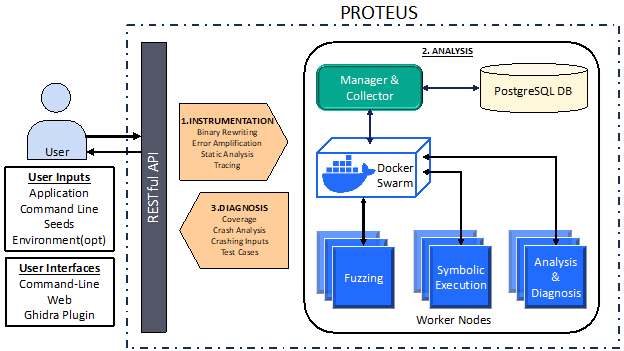In the world of cybersecurity, the severe shortage of experts and the near-infinite amount of work for them poses an existential threat to U.S. critical infrastructure. Enter Proteus, a cutting-edge system developed by GrammaTech to automate the identification, triaging, and remediation of software vulnerabilities. As part of our solution for DARPA’s AI Cyber Challenge (AIxCC), Proteus stands out as a pivotal component in advancing automated cyber defense.
The Legacy of DARPA’s Cyber Grand Challenge
Proteus builds upon the technologies and insights gained from DARPA’s Cyber Grand Challenge (CGC) in 2016. In this competition, autonomous systems were pitted against each other to detect, patch, and exploit vulnerabilities without human intervention. GrammaTech, in collaboration with the University of Virginia, secured second place, demonstrating the capabilities of our cyber reasoning system.
What is Proteus?
Proteus is an autonomous cyber-operator that automates vulnerability detection and remediation in software binaries. It integrates several advanced techniques including fuzzing, symbolic execution, error amplification, and binary rewriting to discover and analyze vulnerabilities dynamically. Proteus operates on both Windows and Linux platforms, making it versatile for a wide range of applications.
Key capabilities of Proteus include:
- Error Amplification: This technique instruments the system under test (SUT) to monitor for potential memory corruption and increase the detection rate of errors, facilitating fault localization.
- Weakness Discovery: By using fuzzing and symbolic execution, Proteus generates test inputs to uncover hidden weaknesses in software.
- Exploitability Analysis: This feature evaluates the severity of crashes to determine their potential exploitability.
The Proteus Architecture
The architecture diagram below clarifies how Proteus works:

The architecture of Proteus can be broken down into several key components:
- User Inputs: These include the application, command line parameters, seed inputs, and optional environmental settings provided by the user.
- User Interfaces: Proteus supports various interfaces such as command-line tools, web interfaces, and a Ghidra plugin.
- RESTful API: This API facilitates communication between the user inputs and the core components of Proteus.
- Instrumentation: This involves binary rewriting, error amplification, static analysis, and tracing.
- Diagnosis: This component covers crash analysis, test case generation, and coverage analysis.
- Analysis Environment: Leveraging Docker Swarm or vSphere, Proteus runs multiple worker nodes to perform fuzzing, symbolic execution, and in-depth analysis.
The Role of Proteus in AIxCC
In AIxCC, Proteus is the base of our cyber defense strategy. Its ability to operate autonomously and efficiently is crucial for maintaining system integrity in the face of sophisticated cyber threats. By integrating Proteus into our solution, we will showcase how AI can revolutionize cybersecurity, enabling quicker responses to threats and reducing the workload on human cyber-operators.
Proteus is not just a tool; it is a force multiplier. By automating the labor-intensive process of vulnerability management, it allows human experts to focus on more critical and complex tasks, thereby enhancing overall cybersecurity posture.
Enhancing Proteus with LLMs
In the context of AIxCC, we are exploring the use of LLMs to increase Proteus automation on two main fronts. First, we are looking at LLMs for automated harnessing for fuzzing and input generation. By creating specialized harnesses and tailoring input generation to the specifics of the program under test, we expect to significantly improve the efficiency of traditional fuzzing techniques without requiring expert input. Second, LLMs can help us close the gap between vulnerability reports and more secure software by suggesting patches that repair the vulnerabilities. These patches can be automatically tested and validated to ensure their quality before being presented to the users.
In conclusion, Proteus represents a significant leap forward in autonomous cyber defense technology. As part of our AIxCC solution, it underscores our commitment to leveraging AI to protect critical infrastructure and ensure national security. Stay tuned for more updates as we continue to push the boundaries of what’s possible in cybersecurity.
